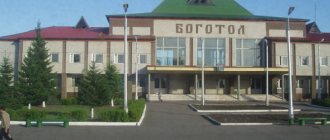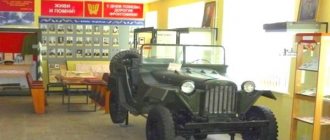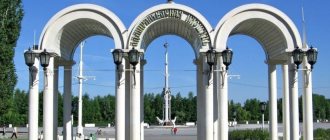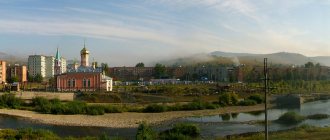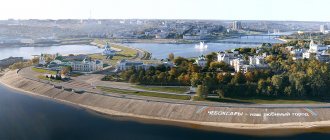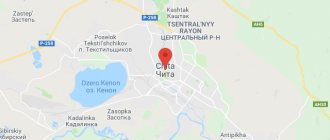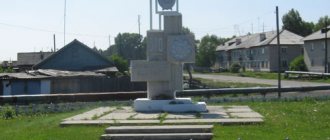Kotovsk
(Tambov Region)
OKATO code:
68410
Founded:
1912
Urban settlement since:
1930
City since:
1940 City of regional subordination
Telephone code (reference phone)
| 47541***** | 42-2-10 |
Deviation from Moscow time, hours:
0
Geographic latitude:
52°35′
Geographic longitude:
41°30′
Altitude above sea level, meters:
130 Sunrise and sunset times in the city of Kotovsk
Our small homeland is the city of Kotovsk. interesting facts about local history on the topic
Our small homeland is the city of Kotovsk.
Our small homeland is the city of Kotovsk. We were born here, went to kindergarten, and now go to school. Our parents and relatives live here. And even when we leave for other lands, we are always drawn back to home!
Why is our city called that?
(Located on the right high bank of the Tsna River, 15 km from Tambov. At present, more than 40,000 people live in Kotovsk. In 1914, the construction of the working village of Porokhovoy Plant and production buildings of a state-owned defense enterprise began with the permission of Nicholas II. The very next year The largest plant in the Tambov region was hastily built and put into operation. Active construction of the plant continued until the revolution of 1917. A narrow-gauge railway was laid. The then only thermal power plant in the Tambov region was erected.
In 1918, the village became the center of a rural area and received the name Udarny, and in 1919 - the name Krasny Boevik. The population of the village according to the 1939 census was 16,986 people.
On April 16, 1940, by Decree of the Presidium of the Supreme Soviet of the RSFSR, the village was transformed into the city of Kotovsk in honor of the hero of the civil war - brigade commander G.I. Kotovsky.
During the Great Patriotic War, the city was first front-line and then rear. The powder factory (plant No. 204) continuously produced gunpowder products. The normal operation of the plant was systematically disrupted by enemy air raids, but none of the workers left the workplace without a command. The anti-aircraft gunners tried with all their might to prevent the enemy from entering. But the enemy forces still managed to break through the anti-aircraft gunners’ screen. On the night of July 8-9, 1942, the factory buildings were subjected to an air strike; thrown high-explosive bombs caused a huge fire on the territory of the plant. 34 people died (mostly young women). In total, 2,698 Kotovites took part in the battles against the Nazis, 2,291 of them were awarded orders and medals. 9 townspeople were awarded the high title of Hero of the Soviet Union: Poskonkin A.R., Kombarov E.I., Konin M.F., Pitersky G.I., Lyubichev M.D., Svistunov A.I., Malin A.P. , Polyakov M.P., Fedorov B.A. 1300 Kotovites did not return from the war. The city has a Park of Military Glory, in which 1,300 acacias are planted - according to the number of citizens who did not return from the battlefields. In 1975, on the 30th anniversary of the Victory over fascism, the Eternal Flame was lit in the Military Glory Park.
Tell me, which streets in our city are named after famous people?
(Poskonkin, Gavrilov, Kotovsky, Kirov, Parkhomenko)
What is our city famous for? (MANY FAMOUS PEOPLE) A. Zimin writes funny poems for children and even shares secrets. (I want to tell you a secret.)
- I want to tell you a secret.
This mystery is not accidental.
Everyone I meet
I note with a light laugh.
- Alyosha is my neighbor.
I ate too much candy yesterday.
And today it’s all green.
Draw needles for him,
Like a Christmas tree in the forest
With a motley bird on its nose.
- And look at Masha
White bow, green sweater -
Overripe dandelion –
Just blow and it's off.
- Here comes Vovchik
Red bug.
- Teddy bear hedgehog
Eight legs.
- Dasha is a yellow-throated chick.
Stabbing the ball into an empty goal.
- And take a closer look at Alina -
Like a jar of red pepper.
- Well, Tanya is just a miracle
In a camel sundress...
- I'm the only good one
Because I am Seryozha.
Map
| Kotovsk: maps |
Kotovsk: photo from space (Google Maps) Kotovsk: photo from space (Microsoft Virtual Earth)
| Kotovsk. Nearest cities. Distances in km. on the map (in brackets along roads) + direction. Using the hyperlink in the distance , you can get the route (information courtesy of the AutoTransInfo website) | |||
| 1 | Builder | 8 () | NW |
| 2 | Pokrovo-Prigorodnoye | 12 () | NW |
| 3 | Tambov | 15 (15) | WITH |
| 4 | Novaya Lyada | 17 (29) | NE |
| 5 | Znamenka | 19 (54) | YU |
| 6 | Satinka | 26 (43) | SE |
| 7 | Rasskazovo | 27 (45) | IN |
| 8 | Bondari | 55 (76) | NE |
| 9 | Dmitrievka | 58 (70) | NW |
| 10 | Rzhaksa | 60 (90) | SE |
| 11 | Tokarevka | 69 (97) | YU |
| 12 | Inzhavino | 72 (121) | SE |
| 13 | Sosnovka | 72 (77) | WITH |
| 14 | Zavoronezhskoe | 72 (82) | NW |
| 15 | Mordovo | 74 (106) | SW |
| 16 | Michurinsk | 76 (88) | NW |
| 17 | Kirsanov | 83 (108) | IN |
| 18 | Zherdevka | 83 (97) | YU |
| 19 | Uvarovo | 84 (113) | SE |
| 20 | Petrovskoe | 84 (118) | Z |
| 21 | Dobrinka (Lipetsk region) | 84 (134) | SW |
| 22 | Pichaevo | 86 (113) | NE |
| 23 | Gavrilovka 2nd | 91 (131) | IN |
| 24 | Ertil | 96 (134) | SW |
| 25 | Staroyurevo | 97 (125) | NW |
| 26 | Morshansk | 98 (97) | WITH |
| 27 | Will clean | 99 (130) | IN |
| 28 | Ternovka (Voronezh region) | 100 (118) | YU |
| 29 | Muchkapsky | 104 (133) | SE |
| 30 | Mud | 106 (121) | Z |
a brief description of
Located in the center of the Oka-Don Plain, on the right bank of the river. Tsna, 13 km south of Tambov. Railway Tambov-II station.
Territory (sq. km): 17
Information about the city of Kotovsk on the Russian Wikipedia site
Historical sketch
It arose before the First World War of 1914-18 as a settlement for the builders of the state gunpowder factory (the decision to build it was made in 1912).
In 1918 it received the name Shock, in 1919 Red Action. The workers' settlement of Krasny Boevik from February 28, 1928. Later it became part of the Industrial District of the city of Tambov.
In 1940, the Industrial District of the city of Tambov was transformed into the city of Kotovsk, named after the civil war participant G.I. Kotovsky (1881-1925), who in May 1921 suppressed the anti-Soviet peasant uprising in the Tambov province led by A.S. Antonov.
The development of the gunpowder plant gave rise to the development of the chemical industry and chemical engineering in the Tambov region.
Municipal indicators
| Index | 2001 |
| Demography | |
| Number of births, per 1000 population | 8.5 |
| Number of deaths, per 1000 population | 18.4 |
| Natural increase (decrease), per 1000 population | -9.9 |
| Standard of living of the population and social sphere | |
| Average monthly nominal accrued wages, rub. | 1836.5 |
| Average housing area per inhabitant (at the end of the year), sq.m. | 18 |
| Number of preschool institutions, pcs. | 10 |
| Number of children in preschool institutions, thousand people | 1.2 |
| Number of daytime educational institutions (at the beginning of the school year), pcs. | 6 |
| Number of students in daytime educational institutions, thousand people | 4.3 |
| Number of doctors, people. | 101 |
| Number of nursing staff, people. | 320 |
| Number of hospital institutions, pcs. | 1 |
| Number of hospital beds, thousand units | 0.4 |
| Number of medical outpatient clinics, pcs. | 4 |
| Capacity of medical outpatient clinics, visits per shift, thousand units. | 0.9 |
| Number of registered crimes, pcs. | 404 |
| Persons who committed crimes were identified, persons. | 277 |
| Economy, industry | |
| Number of enterprises and organizations (at the end of the year), pcs. | 377 |
| Construction | |
| Volume of work performed by type of activity “Construction” (until 2004 - volume of work performed under construction contracts), million rubles. | 25.5 |
| Commissioning of residential buildings, thousand sq.m. of total area | 0.5 |
| Commissioning of residential buildings, apartments | 3 |
| Commissioning of preschool institutions, places | 0 |
| Commissioning of educational institutions, places | 0 |
| Commissioning of hospital facilities, beds | 0 |
| Commissioning of outpatient clinics, visits per shift | 0 |
| Transport | |
| Number of bus routes (in intracity traffic), pcs. | 4 |
| Number of passengers transported by buses per year (in intracity traffic), million people. | 4.1 |
| Connection | |
| Number of residential telephone sets of the city public telephone network, thousand units. | 8.9 |
| Trade and services to the population | |
| Retail trade turnover (in actual prices), million rubles. | 290.6 |
| Retail trade turnover (in actual prices), per capita, rub. | 7941 |
| Public catering turnover (in actual prices), million rubles. | 36.9 |
| Volume of paid services to the population (in actual prices), million rubles. | 107.4 |
| Volume of paid services to the population (in actual prices), per capita, rub. | 2933.4 |
| Volume of household services to the population (in actual prices), million rubles. | 13.7 |
| Volume of household services to the population (in actual prices), per capita, rub. | 375.1 |
| Investments | |
| Investments in fixed assets (in actual prices), million rubles. | 38.3 |
| Share of investments in fixed assets financed from budgetary funds in the total volume of investments, % | 3.7 |
Data sources:
- Regions of Russia. Main characteristics of the constituent entities of the Russian Federation: statistical collection. Goskomstat of Russia. - M:, 2003.
Economy
Kotovsk is an industrial satellite city of Tambov.
The main industry is chemistry: factories - plastics, paint and varnish; artificial leather factory.
Precast concrete plant, brick factory, pasta and clothing factories, etc.
Main enterprises
CHEMICAL INDUSTRY
State Enterprise "Kotovsky Kotovsky Paint and Varnish Plant"
393170, Tambov region, Kotovsk, st.
Zheleznodorozhnaya, 2 Offers:
solvents, epoxy resins, varnishes, enamels, drying oils, water-based paints, phenolic resins, primers
ELECTRONICS INDUSTRY
OJSC "Almaz"
393170, Tambov region, Kotovsk, st.
Svobody, 1 Offers:
microelectronics products, electric fan heaters for industrial and domestic use
Architecture, sights
Until the 1960s Kotovsk was considered the most comfortable and green city in the Tambov region. However, the increase in chemical production volumes has sharply worsened the environmental situation in the city.
In the vicinity of Kotovsk, on the banks of the river. Tsna (between Kotovsky and Tambov) - the remains of the buildings of the Tregulyaev-Predtechensky Monastery (second half of the 17th-18th centuries).
| Population by year (thousands of inhabitants) | |||||||
| 1916 | 8 | 1996 | 38.5 | 2008 | 32.5 | 2017 | 30.4 |
| 1931 | 2.8 | 1998 | 38.0 | 2010 | 32.0 | 2018 | 30.0 |
| 1959 | 25.5 | 2000 | 37.3 | 2011 | 31.9 | 2019 | 29.4 |
| 1967 | 30 | 2001 | 36.8 | 2012 | 31.6 | 2020 | 29.0 |
| 1970 | 33.3 | 2003 | 34.1 | 2013 | 31.4 | 2021 | 28.7 |
| 1979 | 37.8 | 2005 | 33.3 | 2014 | 31.2 | ||
| 1989 | 38.5 | 2006 | 33.0 | 2015 | 31.1 | ||
| 1992 | 38.6 | 2007 | 32.6 | 2016 | 30.7 | ||
The Internet resource “Tambov Today”, together with radio Retro-FM Tambov and the portal about the Tambov region smartregion68.ru continues the series of materials “Discovering the Tambov Region”.
City coat of arms
Acceptance date: 06/30/2011
Number in the Heraldic Register of the Russian Federation: 7210
In a scarlet field on a green, thinly bordered with silver, wavy tip, burdened with a golden cannon barrel, there is a growing spruce of the same metal.
Rationale for symbolism: The coat of arms reflects the historical, economic and natural features of the city in the language of symbols and allegories. The city of Kotovsk arose as a workers' settlement during the construction of a state defense plant that began in 1914. The high importance of the plant during the First World War became the key to its speedy commissioning and the construction of the village itself for workers. In twenty-six years, the nameless factory village turned into a city. On April 16, 1940, by Decree of the Presidium of the Supreme Soviet of the RSFSR, it was renamed the city of Kotovsk. And during the Great Patriotic War, the gunpowder plant (plant No. 204) worked around the clock without closing for a day. During the war, forty million charges and ninety thousand tons of gunpowder were produced here. For its services in providing support to the Soviet Army and Navy during the war, the plant was awarded the Order of the Patriotic War, 1st degree. The gunpowder factory and its role in the emergence and formation of the city are allegorically reflected in the coat of arms with a red field and a gun barrel. The Red Field also refers to one of the early names of the village (from 1919 to 1939) - Red militant. Red color is a symbol of courage, strength, labor, beauty and celebration. The city of Kotovsk is located south of Tambov on the right high bank of the Tsna River, shown in the coat of arms with a silver wavy belt. Originally there was a forest here, and the streets of the village were cut through clearings. And today Kotovsk is one of the greenest and most comfortable cities in the region. This is symbolized in the coat of arms by the green tip and the golden growing spruce. Green color is a symbol of youth, health, nature, and growth in life. Gold is a symbol of wealth, stability, respect, sunshine and warmth. Silver is a symbol of purity, perfection of peace and mutual understanding.
Author group: idea of the coat of arms: Nikolai Lugovskikh, Arkady Antonyan (both from Kotovsk); heraldic revision: Konstantin Mochenov (Khimki), Sergey Yanov (Malakhovka village); artist and computer design: Olga Salova (Moscow); rationale for symbolism: Kirill Perekhodenko (Konakovo).
Approved by the decision of the 23rd session of the Kotovsky City Council of People's Deputies of the fifth convocation (#242) dated June 30, 2011.
City flag
A rectangular panel with a width to length ratio of 2:3, consisting of two horizontal stripes: red (at the top, 2/3 of the width of the panel) and green, separated by a white wavy line, in the center of which, on a green background, there is a yellow cannon barrel, on against a red background is a spruce of the same color.
Author group: idea: Nikolay Lugovskikh, Arkady Antonyan (Kotovsk); heraldic revision: Konstantin Mochenov (Khimki), Sergey Yanov (Malakhovka village); artist and computer design: Olga Salova (Moscow); rationale for symbolism: Kirill Perekhodenko (Konakovo).
Approved by the decision of the Kotovsky City Council of People's Deputies (#540) dated December 27, 2012.
City `s history
Kotovsk is one of those cities that was originally destined to forge Russia’s defense shield, although over time its economy became increasingly peaceful. The direct participation of the military in its creation is visible at first glance. The city was founded on the right high bank of the Tsna River, two dozen kilometers from the regional center - Tambov. A clear architectural layout, streets located at right angles to each other, which arose in place of forest clearings, determined the appearance of Kotovsk, which continued to develop in this way.
Kotovsk owes its existence to the decision of the Russian Government, with the permission of His Imperial Majesty Nicholas II, to build the largest state-owned defense enterprise. The construction of production buildings and a workers' settlement, which began in 1914, was spurred by the First World War. The very next year, thousands of peasants recruited in the surrounding villages, who came to recruit qualified engineers and workers from the largest industrial centers of the country, mobilized soldiers hastily built and put into operation the largest plant in the Tambov region.
Before the revolution of 1917, active construction of the plant and its production buildings continued. A narrow gauge railway was built. The only thermal power plant in the Tambov region was built at that time. The factory village developed more slowly and had no name. The bulk of the population lived in barracks. The first stone one-story houses were erected on the current streets of Naberezhnaya, Oktyabrskaya, and Kirov. The infrastructure of the village is gradually being formed; a hospital, a bathhouse, a laundry, a dining room appear, and a bazaar with merchants' shops appears. A wooden church is being built on Oktyabrskaya Street. In 1918, the village became the center of a rural region, which included eight volosts and 101 villages. This year the village received the name Udarny. In 1919, the village received the name Red militant. In the thirties, the village was completely electrified, the housing area increased tenfold, mainly due to the construction of brick apartment buildings.
In addition to the city-forming plant, there is a bakery. A hospital for 110 places, a nursery for 170 places, a secondary school for 1,777 places, a junior high school for 922 places, 4 kindergartens for 275 places, a holiday home, a Palace of Culture, and 4 libraries are being built.
In 1940, an industrial technical school opened. A vocational school begins to train workers. The population of the village according to the 1939 census was 16,986 people.
By a resolution of the Presidium of the All-Russian Central Executive Committee on February 9, 1938, the plant village was allocated to an independent industrial district of Tambov with the formation of a district council. And on April 16, 1940, by Decree of the Presidium of the Supreme Soviet of the RSFSR, the village was renamed the city of Kotovsk in honor of the legendary Red Army brigade commander Grigory Ivanovich Kotovsky, who participated in the suppression of the peasant uprising in the Tambov region during the Civil War.
The city’s achievements in the Great Patriotic War are enormous. In the most difficult conditions of the front line, often under bombing, the Kotovites worked around the clock in the workshops of their defense plant, now the federal state-owned enterprise Tambov Powder Plant. During the war, 40 million charges and 90 thousand tons of gunpowder were produced. For services in supporting the Soviet Army and Navy during the Great Patriotic War, the enterprise was awarded the Order of the Patriotic War, 1st degree.
The post-war years became a time of qualitatively new development of Kotovsk. Along with the further expansion of the production capabilities of the plastics plant and the implementation of conversion programs there, new enterprises are emerging. These are the Almaz electronics industry plant, the Kotovsky paint and varnish plant, the city thermal power plant, the Iskozh factories, pasta factories, and construction materials enterprises. The city's social infrastructure has improved, and the spheres of trade, consumer services, healthcare, culture and sports have developed.
Kotovsk rightfully began to be considered one of the leading cities in the Tambov region in terms of economic potential. He retains his capabilities to this day.
Over the years, the architectural appearance of the city has changed significantly. The central streets, located parallel to each other - Naberezhnaya, Oktyabrskaya, Kotovskogo, Kirov, Sovetskaya, Svobody, Kolkhoznaya, etc., are lined with brick buildings erected during the first five-year plans. With the development of panel housing construction, standard nine-story buildings grew in the southern and northern microdistricts of the city, in which thousands of families of Kotovites settled.
Report. "Historical monuments of Kotovsk"
Historical monuments of Kotovsk
In 1949, on April 19, the Kotovsky City Committee of the Communist Party of the Soviet Union decided to build a city park named after Kirov, between Sovetskaya, Kirov and Prospekt Truda streets. In 1969, the park named after Kirov was renamed the Park of Military Glory. The Executive Committee of the Tambov Regional Council of Deputies and Workers adopted a decision “On the installation of an obelisk to fallen soldiers in the Park of Military Glory in Kotovsk.” The opening took place on the 30th anniversary of Victory in the Great Patriotic War in 1975.
The author of the obelisk project is Honored Architect of the Russian Federation Alexander Sergeevich Kulikov. The obelisk was erected in the center of the park at the intersection of existing alleys and is clearly visible from all sides. The height of the obelisk is 16 meters. The earthen mound on which the obelisk stands is made in the shape of Slavic hills and rises 2 m above ground level. Weeping willows, spruces, and more than 1000 acacias are planted in the park, symbolizing the memory of fallen soldiers.
On May 9, 1985, the opening of the Memory Alley took place in the Park of Military Glory. On both sides of the alley there are marble slabs with the names of soldiers, Kotovites, who died during the Great Patriotic War, engraved on them.
On August 11, 2001, a memorial to internationalist soldiers was opened in the Park of Military Glory on the territory of Afghanistan and Chechnya. The idea of building a monument arose after the creation of the Russian Union of Afghanistan Veterans organization in our city in February 1997. The author of the monument project is Honored Architect of the Russian Federation Alexander Sergeevich Kulikov.
The memorial complex dedicated to the 90th anniversary was opened on November 18, 2005 and includes – a stele on which – the year the enterprise was founded and the Order of the Patriotic War, 1st degree; on memorial plaques - the names of Heroes of the Soviet Union of the plastics plant; The cannon is a symbol of the defense enterprise.
The monument to G. I. Kotovsky. The bust of the legendary hero of the civil war was unveiled on June 20, 1981. The author of the monument is Sergei Efimovich Lebedev, Honored Sculptor of the RSFSR.
Obelisk “October” On November 5, 1957, a stele with the inscription “In memory of the soldiers who died for the cause of the proletarian revolution in 1918-1921” was erected in the center of the square. The author of the obelisk project is Nikolai Mikhailovich Moroz, head of the PKO.
Museum historical and educational educational complex of the city of Kotovsk. The Museum of the History of the City of Kotovsk was opened on November 6, 1977 by the decision of the bureau of the city committee of the CPSU and was located in a small house located on the street. Kotovsky. In 1981, the museum was transferred to the Furshdtat building, built in 1917 for the needs of the Tambov Gunpowder Plant on July 1, 1998. The building was recognized as a historical and cultural monument of local significance, in 2004 the building was registered with the regional monument protection authority.
In 1996, the museum acquired a new status - a museum historical and educational educational complex (MIPOK). Today the museum complex is an educational and methodological center for all educational institutions of the city, the guardian of the continuity of cultural traditions.

